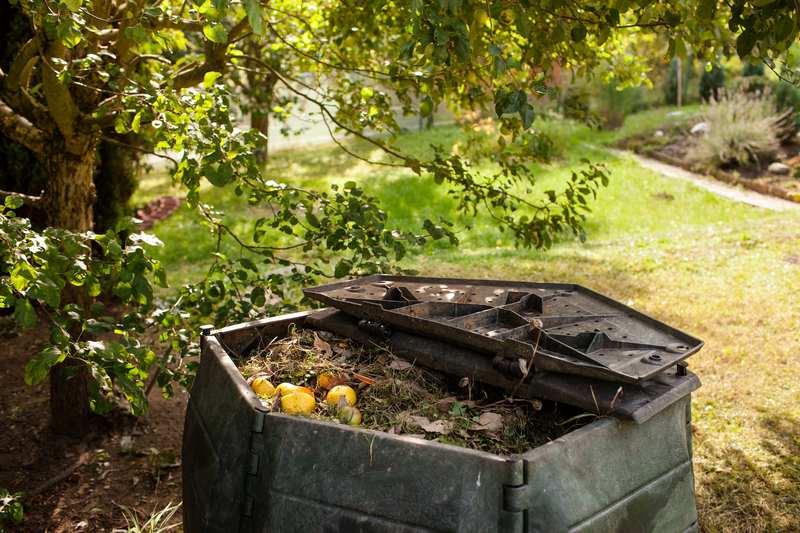Disposing of Heavy Furniture Without Stress or Mess
Disposing of heavy furniture can often feel overwhelming, whether you're moving, downsizing, or simply redecorating your living space. Many people find themselves stuck with old, bulky items they no longer want or need, unsure of how to safely and efficiently get rid of them.
But fear not! With a structured approach, a bit of preparation, and the right resources, disposing of heavy furniture without stress or mess is entirely achievable. This comprehensive guide provides detailed steps, tips, and various solutions for easy furniture disposal, turning what could be a hassle into a seamless, eco-friendly process.
Why Proper Furniture Disposal Matters
Improper disposal of large furniture pieces doesn't just create unnecessary clutter in your home or office--it can negatively affect the environment and even lead to safety hazards. Understanding why it's important to responsibly dispose of heavy furniture ensures you make the best choice for you and your community.
- Environmental Impact: Furniture in landfills contributes to growing waste and can take decades, even centuries, to decompose.
- Legal Considerations: Many municipalities have strict rules against dumping bulky waste on the curb. Illegal disposal could lead to fines.
- Community Welfare: Donating usable furniture helps less-privileged individuals and reduces overall waste.
- Safety Concerns: Large, heavy pieces can cause injury if not handled or disposed of properly.

Preparing for the Disposal of Heavy Furniture
Preparation is the key to a smooth, safe, and mess-free furniture disposal process. Consider these steps before moving your heavy items:
1. Assess Condition
- Inspect your furniture for damage, stains, or wear.
- Functional or gently-used items may be suitable for donation or resale.
2. Measure and Plan
- Measure the furniture and the doorways, hallways, or elevators leading outside.
- Create a clear path for moving large items to prevent damage or accidents.
3. Disassemble Where Possible
- Remove legs, cushions, drawers, or other detachable parts to make furniture lighter and easier to handle.
- Keep all screws and small parts in a labeled bag for easier reassembly (if needed for resale or donation).
4. Gather the Right Equipment
- Use furniture dollies, sliders, or lifting straps for safe transportation.
- Have gloves, blankets, and straps on hand to protect walls, floors, and yourself.
5. Enlist Help
- Heavy furniture is rarely a one-person task. Ask friends, family, or neighbors for assistance.
Eco-Friendly Furniture Disposal Options
Today, there are a variety of responsible and convenient methods for disposing of heavy furniture. Here's a look at popular, eco-friendly alternatives:
1. Donating Heavy Furniture
Many charitable organizations, thrift stores, and shelters accept furniture in good condition.
- Goodwill and Habitat for Humanity ReStores offer free or low-cost pickup in many regions.
- Local shelters, churches, and community centers often welcome donations of beds, couches, and tables.
- Benefits: Helps others, reduces landfill waste, may provide a tax deduction.
2. Selling Used Furniture
If your furniture is high-quality or still has life left, selling it can be a great way to earn some money and ensure the item is reused.
- Post on Craigslist, Facebook Marketplace, or OfferUp for local buyers.
- Consider consignment shops for unique or antique pieces.
- Set a fair price and include clear, well-lit photos.
- If unable to transport the furniture, offer a discount for buyer pickup.
3. Upcycling and Repurposing
With a bit of creativity, old furniture can be transformed into something new and useful.
- Turn a wooden dresser into garden planters or a storage bench.
- Sand, repaint, or refinish pieces to match a new theme or room.
- Repurpose parts (wood, metal, hardware) for DIY projects.
4. Junk Removal Services
For items that are no longer usable, or if you simply want a hassle-free solution, professional junk removal companies provide quick and reliable furniture removal.
- Companies like 1-800-GOT-JUNK? and College Hunks Hauling Junk handle all the heavy lifting.
- Most companies recycle or donate items when possible, making this a more sustainable option than landfill dumping.
- Costs vary by size and location but can save significant time and effort.
5. Municipal Bulk Pickup
Many cities offer scheduled "bulk waste" or "large item" pickups for homeowners.
- Contact your local waste management department to learn about guidelines and pickup dates.
- Important: Confirm what types of heavy furniture are accepted and whether you need to schedule ahead of time.
- Prepare the item for curbside pickup following city regulations (wrapping, tagging, disassembly).
6. Scrap and Recycling Centers
Some heavy furniture, especially metal items, can be taken to recycling centers or scrap yards.
- Break down items into recyclable components, such as metal frames or wooden planks.
- Some centers offer pick-up, especially for valuable scrap metal.
- Check if your local center accepts upholstered items, as these can be harder to recycle.
Avoiding Common Pitfalls: Tips for Safe and Clean Furniture Disposal
When handling large, heavy pieces, mistakes can endanger your safety or damage your home. Here are best practices for a stress-free, mess-free disposal:
- Protect Your Space: Use furniture blankets, cardboard, or towels to shield walls and floors as you maneuver bulky items.
- Use Proper Lifting Techniques: Bend your knees, not your back, lift with your legs, and keep items close to your body.
- Communicate with Helpers: Discuss the plan and coordinate movements (especially in tight spaces or on stairs).
- Prevent Mess: Wrap furniture in plastic if it's dirty or at risk of shedding upholstery, foam, or stuffing during transport.
- Double-Check for Leftovers: Inspect drawers, compartments, and under cushions to ensure nothing valuable is left behind.
- Clean Up Afterwards: Sweep or vacuum any dust, dirt, or debris left behind by the furniture's removal.
Special Considerations for Different Types of Furniture
Different furniture types may require unique disposal tactics. Here's a breakdown:
Beds and Mattresses
- Many cities have special mattress recycling programs; some require fees or stickers.
- Mattresses in good condition may be accepted at shelters or thrift stores.
Upholstered Items (Sofas, Chairs)
- Check with local charities--some have strict rules about upholstered furniture due to regulations or bed bug risks.
- Reusable fabric or cushions may be repurposed for pet shelters.
Office Furniture
- Metal desks, filing cabinets, and chairs can often be scrapped or recycled.
- Resale shops and office liquidation services specialize in corporate furniture disposal.
Antique or Specialty Pieces
- Before deciding to discard, research the item's value. Auction houses or antique dealers may be interested.
- If the item is damaged but has collectible hardware or materials, salvage what you can for resale.
What Not To Do: Common Furniture Disposal Mistakes
- Don't dump illegally! Never leave furniture on sidewalks or empty lots--this creates eyesores, hazards, and potential legal trouble.
- Don't ignore local regulations. Always research community guidelines to avoid fines or issues with waste removal.
- Don't forget about recycling. Many people assume all old furniture belongs in the landfill, yet much can be reused, upcycled, or recycled.
- Don't sacrifice safety for speed. Rushing increases the risk of injury or damage.
Frequently Asked Questions: Disposing of Heavy Furniture
Do I need a permit to dispose of large furniture in my city?
Requirements vary by city. It's wise to check with your local public works or sanitation department before putting anything curbside, as some areas require scheduling or permits for bulky waste collection.
What if my furniture is infested with pests?
If you suspect bed bugs or other pests, inform any removal service beforehand and clearly label the item if leaving it for municipal collection. Wrap infested furniture in plastic to prevent spread.
Can I leave heavy furniture in a dumpster?
Typically no; most communal dumpsters ban bulky items. Unauthorized use can result in fines.
How can I move heavy furniture by myself?
It's safest to find help, but if you must move items solo, use proper equipment: furniture sliders, dollies, and lifting straps. Always prioritize safety and start by disassembling what you can.
Are there services that will pick up my furniture for free?
Some charities offer free pick-up for donations in good condition. Junk removal services usually charge, but municipal programs might be free for residents on specific dates.

The Benefits of Stress-Free and Responsible Furniture Disposal
Embracing stress-free, environmentally-conscious heavy furniture disposal brings numerous benefits:
- Saves Time and Energy: Efficient planning and the right help reduce hassle and physical strain.
- Protects Your Home: Careful handling avoids scratches, dents, and other costly damage.
- Helps the Environment: Donating, upcycling, and recycling keep furniture out of landfills.
- Supports Your Community: Items you no longer want can become treasures for others in need.
- Boosts Safety: Professional help and safe techniques minimize risk of injury.
Remember: The key to disposing of heavy furniture without stress or mess lies in preparation, choosing the right disposal method, and ensuring safety and environmental responsibility throughout the process.
Final Thoughts: Say Goodbye to Bulky Furniture, Stress-Free!
Whether you're tackling a single old armchair or an entire household of unused items, furniture disposal doesn't have to be an ordeal. The options and strategies above will help you clear your space efficiently, protect your health, and make a positive impact on the community--without frustration or mess.
If in doubt, always consult with local authorities, charities, or professional removal services to ensure you're following regulations and making the most eco-friendly choice. With the right approach, getting rid of heavy furniture can be just as satisfying as setting up your new and improved living space!
Dispose of your heavy furniture smartly, and enjoy a cleaner, stress-free environment in no time!